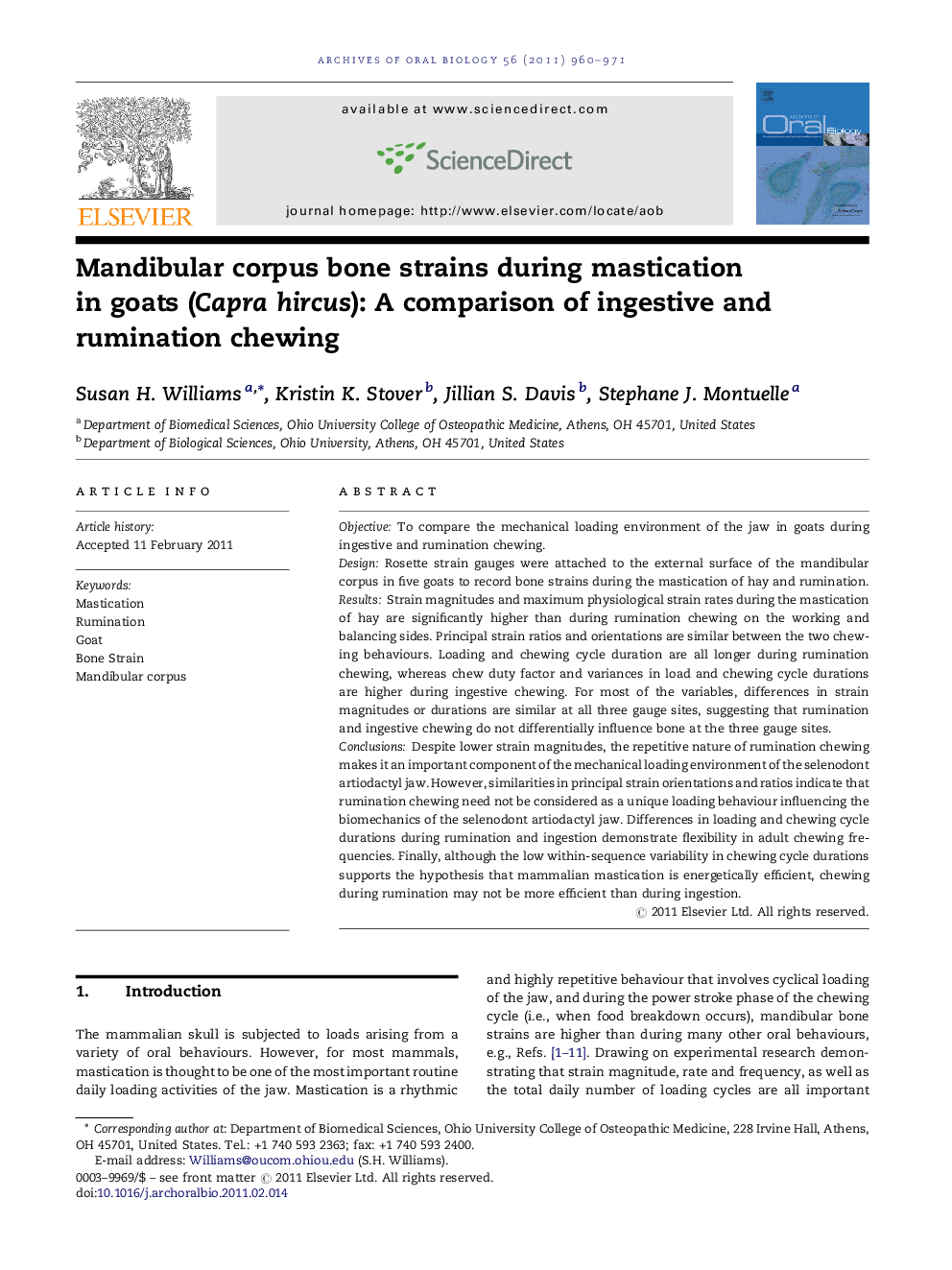| Article ID | Journal | Published Year | Pages | File Type |
|---|---|---|---|---|
| 6051323 | Archives of Oral Biology | 2011 | 12 Pages |
ObjectiveTo compare the mechanical loading environment of the jaw in goats during ingestive and rumination chewing.DesignRosette strain gauges were attached to the external surface of the mandibular corpus in five goats to record bone strains during the mastication of hay and rumination.ResultsStrain magnitudes and maximum physiological strain rates during the mastication of hay are significantly higher than during rumination chewing on the working and balancing sides. Principal strain ratios and orientations are similar between the two chewing behaviours. Loading and chewing cycle duration are all longer during rumination chewing, whereas chew duty factor and variances in load and chewing cycle durations are higher during ingestive chewing. For most of the variables, differences in strain magnitudes or durations are similar at all three gauge sites, suggesting that rumination and ingestive chewing do not differentially influence bone at the three gauge sites.ConclusionsDespite lower strain magnitudes, the repetitive nature of rumination chewing makes it an important component of the mechanical loading environment of the selenodont artiodactyl jaw. However, similarities in principal strain orientations and ratios indicate that rumination chewing need not be considered as a unique loading behaviour influencing the biomechanics of the selenodont artiodactyl jaw. Differences in loading and chewing cycle durations during rumination and ingestion demonstrate flexibility in adult chewing frequencies. Finally, although the low within-sequence variability in chewing cycle durations supports the hypothesis that mammalian mastication is energetically efficient, chewing during rumination may not be more efficient than during ingestion.
